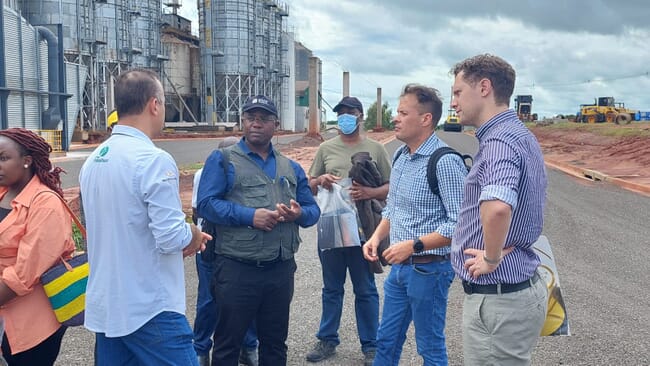
The itinerary included a visit to the largest independent aquafeed producer in Brazil, Raguife, which is part of Grupo Ambar-Amaral
The visit was organised by ThinkAqua and FAI Farms and Supported by Gatsby Africa. The main goal was to facilitate knowledge exchange between high-level officials within the Ministry of Agriculture, Animal Industry and Fisheries (MAAIF) of Uganda and the tilapia aquaculture industry in Brazil.
One of the key focal points was the potential economic and environmental impacts of Brazil’s increasingly industrial-scale aquaculture sector. This was done by showcasing the scale of feed manufacturing required to support a large industry, with a particular focus on ingredient supply chains and a demonstration of how environmental risk and impact are effectively managed by industry and regulators.
Biosecurity, as well as fish health and welfare, were also discussed and the visit explored the prerequisites for growing the industry: including the need for knowledge and skills development, improved information sources, and a demonstration of the technology and innovation that could be applicable to Uganda’s aquaculture development plans.
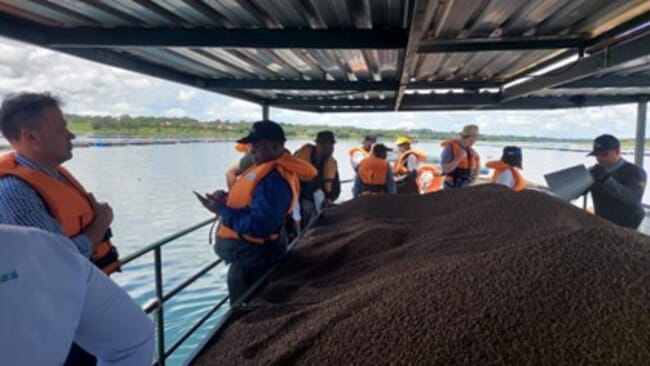
Grupo BTJ is becoming an increasingly important player in Brazil's tilapia industry and boasts large farming and processing facilities
Feed production
The itinerary including a visit to Raguife, part of Grupo Ambar-Amaral, which is the largest independent aquafeed producer in Brazil. It was hosted by Felipe Amaral, one of the company owners, who showed the full operation of the factory and discussed the ingredient supply chains required to produce 100,000 tonnes of feed per year. The group also farm and market tilapia through the brand Brazilian Fish. The delegation visited one of their farms as well.
Hatchery visit
The delegation then visited Global Peixe – a major tilapia hatchery/nursery run by Emerson Esteves, a recognised pioneer in the industry. Global Peixe produce 100 million fingerlings per year and 40 million vaccinated juveniles. They have recently constructed a series of ponds and a new automated vaccination station to give them greater control to do this on land.
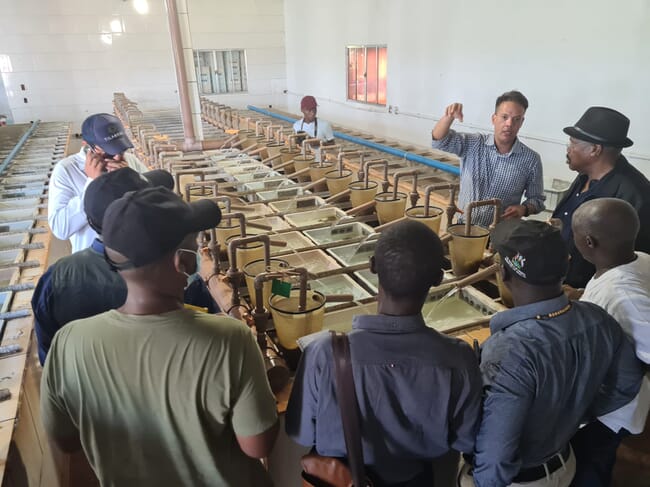
Global Peixe produce 100 million fingerlings per year and 40 million vaccinated juveniles
The Junqueira brothers
Next up was Grupo BTJ – an increasingly important player in the industry with farming and processing facilities. We were welcomed by brothers Henrique Junqueira (farming) and Felipe Junqueira (processing). BTJ slaughter their own fish from their three production sites, but also buy from other farms when required to meet customer demand.
They sell about 50 percent whole fish and 50 percent fillets, with most of the latter sold fresh on ice to customers in Sao Paulo city and some sold frozen to more distant areas of Brazil. Felipe Junqueira is also vice-president of PiexeBR, the Brazilian Fish Producers Association, with membership across the industry – including feed, seed, production and processing. The organisation collects statistics and publishes an annual report on industry performance. PeixeBR, BTJ Group and Global Peixe are all partners of FAI’s tilapia welfare project.
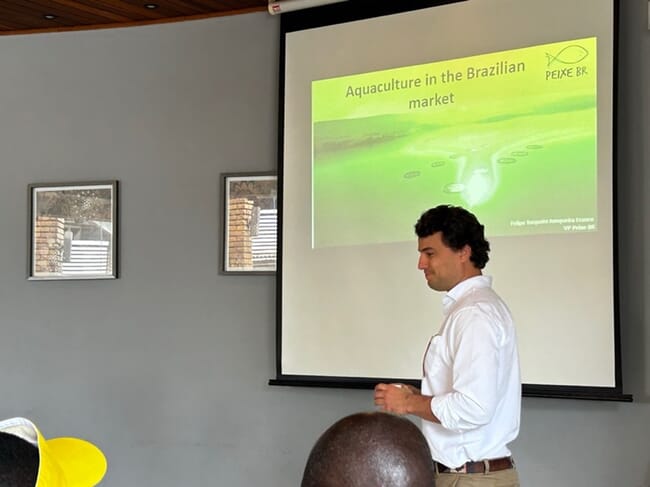
BTJ slaughter their own fish from their three production sites and also buy tilapia from other farms to meet customer demand
Governmental support
The delegation was met by a number of key players from Brazil’s Ministry of Fisheries and Aquaculture, including Minister Andre de Paula. They explained that water use regulation, environment, fish health and welfare are part of the aquaculture development programme being implemented by the ministry.
Lessons learned
The Ugandans departed with a number of important lessons from Brazil.
Among other things they saw how the development of the commercial tilapia sector has been led by companies, typically with existing experience in commercial agriculture and livestock production. Clear licencing, spatial planning, carrying capacity calculations, and site identification carried out by the government (state and federal level) has provided a clear framework to give investors confidence.
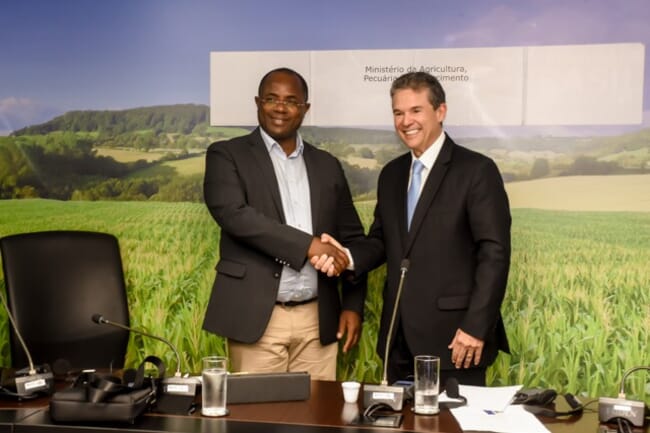
The Ugandan delegation noted that the development of Brazil's commercial tilapia sector has been led by companies
Their visit to Brazil suggested that, to grow a commercial aquaculture sector the following are essential: a consistent supply of quality feed, rigorous fish health protocols, careful environmental monitoring, and fish that can cope with the environment and express their natural behaviour.
In Brazil, the sector and its service industries employ 3.5 million people. Commercial tilapia aquaculture is helping drive economic development and provides high-quality, low-carbon food through maximising the use of circular economy practices.
There are expectations that the visit will open opportunities for joint development initiatives, in both the private and public sectors, between Brazil and Uganda.




